633 14th Ave E
David Whitcomb House
Built: 1907
Home of Two Real Estate Executives That Later Became Politicians
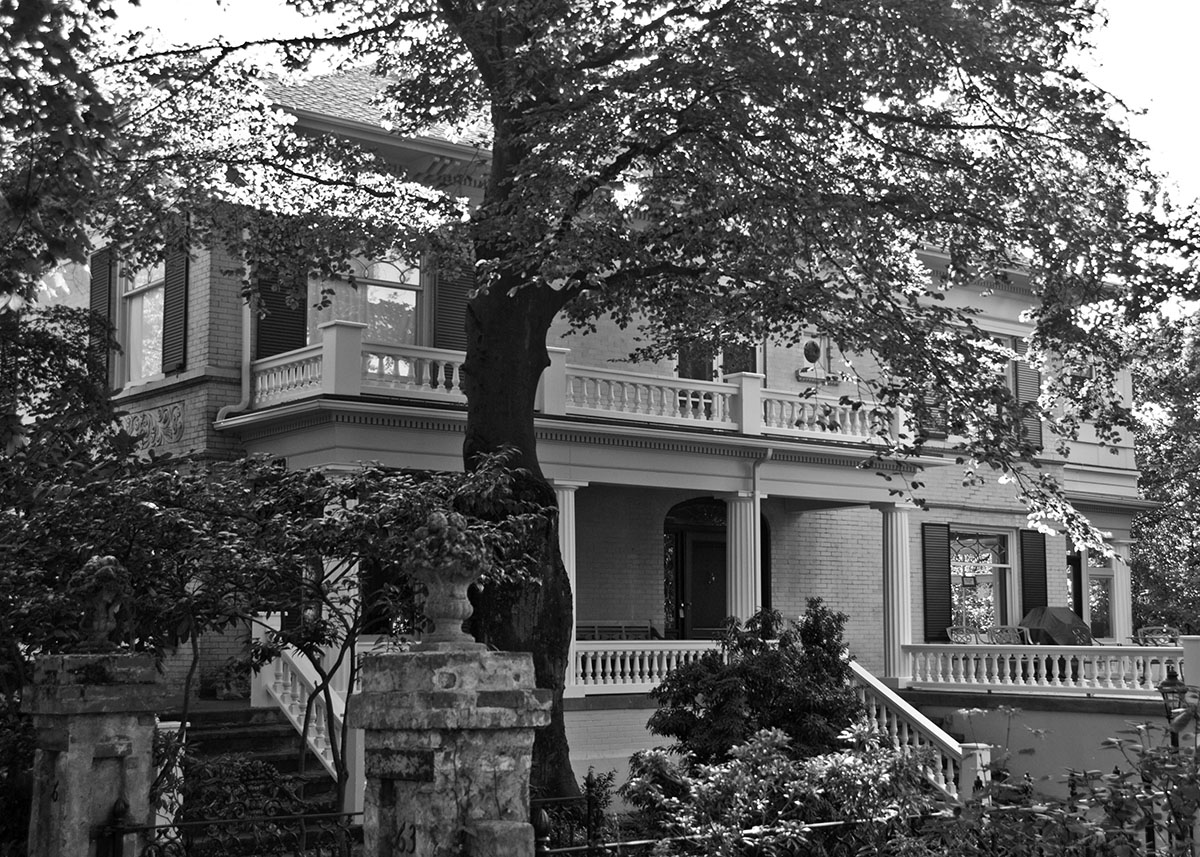
- Style: Colonial Revival / Foursquare
- Architect: Henry Dozier
- Builder: Layton & White
Description
This 2 ½ story American Foursquare house, designed by Henry Dozier, has also been described as Colonial Revival. The house's original building permit (#48094, dated March 6, 1907) gave permission to contractors Layton & White to construct a 32'x50' residence at a cost of $10,000. The house is positioned perpendicular to the street, with its primary entrance on the north face. The house is clad in an unusual light grey brick. The (east) side fronting the street features a large frieze with an acanthus leaf motif. The (north) front of the house features a large portico with Doric columns and a railing supported by wide balusters. The large double hung windows have leaded glass in the upper panels. The hipped roof has dormers on the north, east, and south sides, and modillions in sets of three embellish the roofline. Although a few changes have been made to the house over the years, most notably a garage added to the northwest corner off the street, the house still "reads" as it did when it was built in 1907. Nyberg and Steinbreuck's 1975 inventory of Capitol Hill architecture listed this as one of eighty buildings that were significant to the city. A 1979 Seattle Inventory by the Department of Urban Conservation, conducted by Mark L. Peckham, gave this house "A" grades both on individual merit and contribution to the district. A recent Seattle Department of Neighborhoods Historical Site Survey judged this house's historic integrity to be high, and indicated that it is located in a potential historic district. This house was chosen as one of eight that was included in the Seattle Art Museum's 15th Annual Exhibition of Residential Architecture, "Capitol Hill Classics".
History
Both of the two earliest owners of this house were presidents of real estate companies, both worked for a time with James A. Moore (the original developer of Capitol Hill), and both later served in government.
Robert A. Tripple moved into this house from #626 across the street, a house he had built five years earlier, and he asked the same architect, Henry Dozier, to design it. Tripple was born in Pennsylvania, around 1855. In approximately 1888, he moved to Tacoma, and opened the largest shoe store in the city, which became a very successful business. By 1902 he had relocated to Seattle, entering into the real estate business. From 1902 to 1904 he worked with James A. Moore at the Moore Investment Company, before forming his own real estate firm in 1905. In 1908 he became president of the Skagit Queen Consolidated Mining Company. It was the largest mining operation in Thunder Creek, where silver was discovered in 1900 – but the silver was not plentiful enough to keep the operation going, so by 1910 he was back running his real estate company full time. Later, Tripple was elected to the Washington State Legislature for four terms: in 1921, 1925, 1927, and 1929.
David Whitcomb, who bought the house in 1912, was a Harvard-trained lawyer that chose the real estate profession. He was vice-president and then president of the Arcade Building and Realty Company, which built many of the city's largest office buildings – often together with the Moore Investment Company. During World War I, he put real estate aside to assist in the war effort, first serving as the Washington State Fuel Administrator (where he made the very unpopular decision to ration coal), and then as Executive Secretary of U.S. Fuel Administration in Woodrow Wilson's administration. David Whitcomb also served as president of the Seattle Chamber of Commerce, the Garage Building Company, the Woodway Park Corporation, the Arlington Investment Company, the Central Seattle Building Corporation, the Rainier National Park Company, and the Washington National Parks Association. He was a director of the National City Bank of Seattle, and a trustee of both the Washington Mutual Savings Bank and the Seattle Title Trust Company.
According to Bagley's History of Seattle, Whitcomb's father made his fortune being the first in America to manufacture envelopes by machine, and came to Seattle at the behest of James A. Moore. Bagley states, "In 1901 he purchased practically all of what is now Capitol Hill, cleared it, paved it and placed in on the market through the office of James A. Moore." Interestingly, Bagley gives Whitcomb's father at least as much credit for the creation of Capitol Hill's residential district as Moore himself. The Whitcomb Building was named after David Whitcomb's father, G. Henry Whitcomb, and the Estabrook Building was named after his mother, Abbie Miller (Estabrook) Whitcomb.
Additional Material
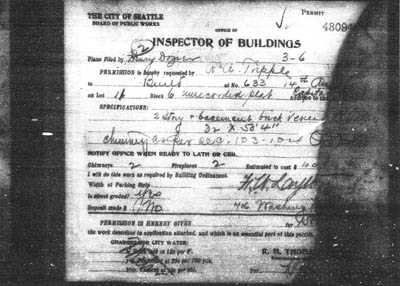
Building Permit
The original permit from 1907.
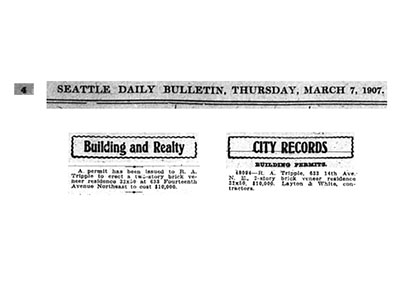
Announcement of Permit
The permit announcement from The Seattle Daily Bulletin, March 7, 1907.
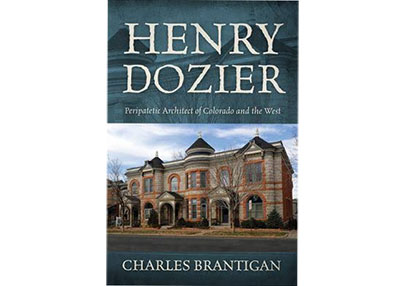
The Architect
Henry Dozier, the architect for this and a neighboring house, is described in this book. Click to read the eBook.
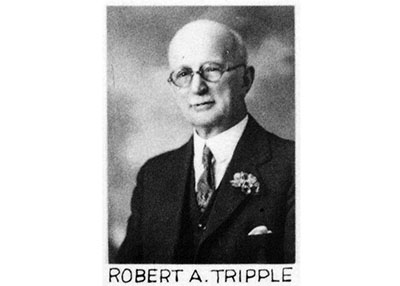
Robert A. Tripple
Robert A. Tripple, the first owner, worked with James Moore to develop Capitol Hill, and served in the Washington State House in 1921, 1925, 1927, and 1929.
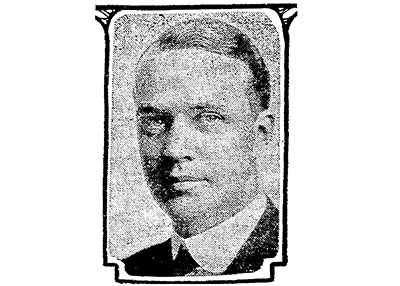
David Whitcomb
David Whitcomb, the second owner, also worked with James Moore, became president of Arcade Bldg. & Realty, served in the Woodrow Wilson administration, and was president of the Rainier National Park Company.
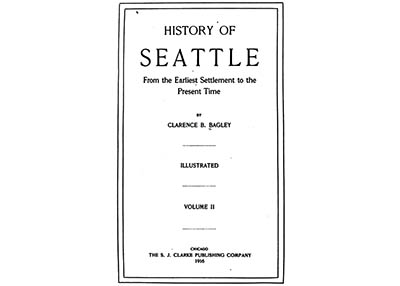
David Whitcomb
In 1901, Whitcomb's father "purchased practically all of what is now Capitol Hill, cleared it, paved it and placed it on the market through the office of James A. Moore." (Bagley)
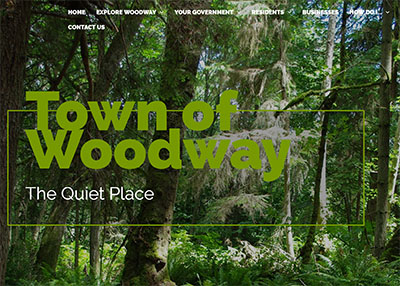
Woodway, Washington
David Whitcomb later founded Woodway, Washington, a prosperous community to the north of Seattle.
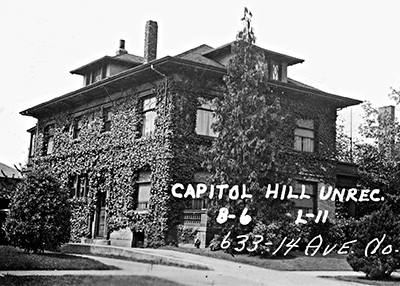
Archive Photo #1
This 1937 photo from the Washington State Archives shows an ivy-covered house.
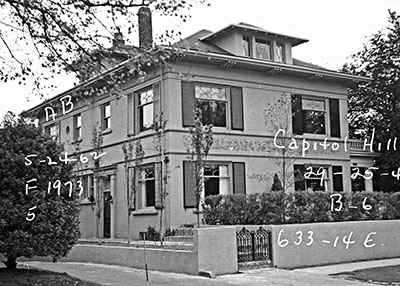
Archive Photo #2
This 1962 photo from the Washington State Archives shows the addition of front and side retaining walls.
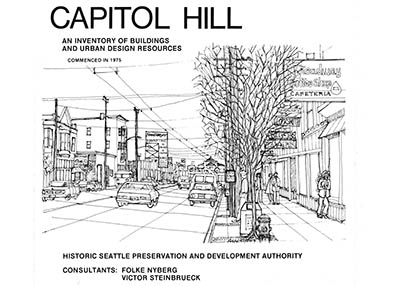
Capitol Hill Inventory
Nyberg and Steinbrueck's 1975 Inventory listed this house as one of 80 significant buildings in Capitol Hill
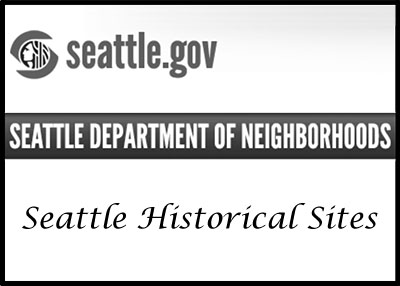
Historical Survey
A Dept. of Neighborhoods survey notes this house's historic value.